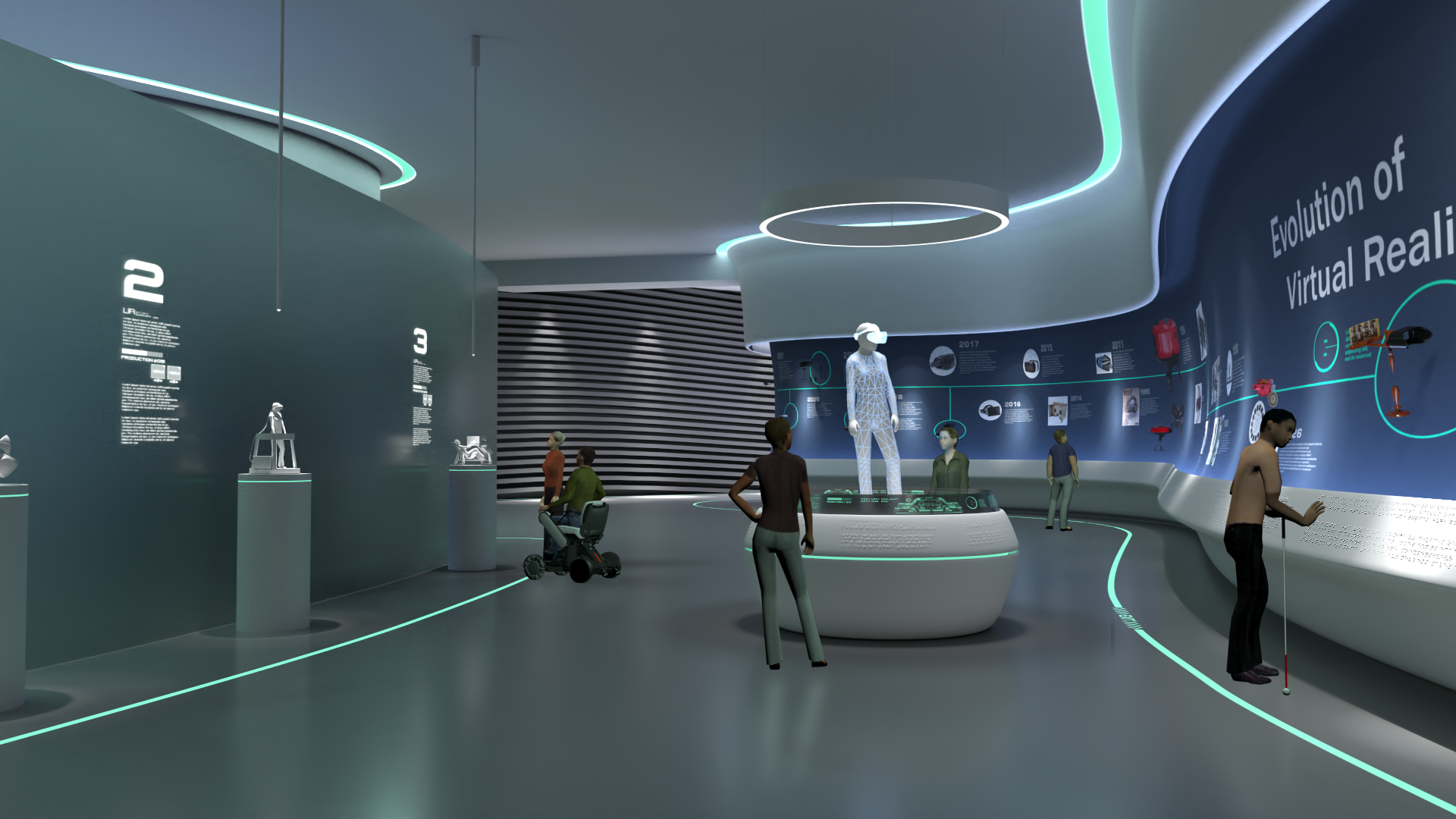
- Mechanisms for AR/VR/xR
Annotated Bibliography
COPY currently shown bibliography
Gruenefeld, U., Geilen, A., Liebers, J., Wittig, N., Koelle, M., & Schneegass, S. (2022). ARm Haptics: 3D-Printed Wearable Haptics for Mobile Augmented Reality. Proceedings of the ACM on Human-Computer Interaction, 6(MHCI), 1-18.
- The paper presents the ARm Haptics system, which is worn on the user's forearm and provides 3D-printed input modules, each representing well-known interaction components such as buttons, sliders, and rotary knobs. The paper also discusses opportunities for haptics worn on the forearm.
Inside Liberland, the Balkan micronation becoming the first country to be built in the metaverse.
- Learn about Liberland, the first country to be built and inhabited in the virtual world. It has 7,000 approved residents with 700,000 more applications for citizenship being processed.
Tan, P., Han, X., Zou, Y., Qu, X., Xue, J., Li, T., Wang, Y., Luo, R., Cui, X., Xi, Y., Wu, L., Xue, B., Luo, D., Fan, Y., Chen, X., Li, Z., Wang, Z. L., Self-Powered Gesture Recognition Wristband Enabled by Machine Learning for Full Keyboard and Multicommand Input. Adv. Mater.2022, 34, 2200793. https://doi.org/10.1002/adma.202200793
- This study created a gesture recognition wristband to serve as a lightweight alternative to existing VR control systems that are more physically cumbersome. They achieved 92.6% accuracy and found the technology to have great potential.
VR remote collaboration system lets share user experience on the move without causing VR sickness.
- This article discusses a remote collaboration system that allows users to not only share what they see but share how they feel as they move through the VR world. Riders equipped with cameras and accelerometers can feedback their sensations to a remote user on a modified wheelchair wearing a VR headset. User surveys showed significant reduction in VR sickness, promising a better experience for remote collaboration activities.
What is the metaverse, and who will build it?
https://www.zdnet.com/article/what-is-the-metaverse-and-who-will-build-it/
- The article elaborates on Metaverse, it's market, and how it will expand in the future.
Fernández-Vázquez, D., Cano-de-la-Cuerda, R., & Navarro-López, V. (2022). Haptic Glove Systems in Combination with Semi-Immersive Virtual Reality for Upper Extremity Motor Rehabilitation after Stroke: A Systematic Review and Meta-Analysis. International Journal of Environmental Research and Public Health, 19(16), 10378.
- "The effectiveness of the virtual reality (VR) for the upper extremity (UE) motor rehabilitation after stroke has been widely studied. However, the effectiveness of the combination between rehabilitation gloves and semi-immersive VR (SVR) compared to conventional treatment has not yet been studied...The combined use of rehabilitation haptic gloves and SVR with conventional rehabilitation produces significant improvements with respect to conventional rehabilitation treatment alone in terms of functionality of the UE in stroke patients." (Fernández-Vázquez, D. et al. 2022)
Xing, T., Yang, Q., Jiang, Z., Fu, X., Wang, J., Wu, C. Q., & Chen, X. (2022). WiFine: Real-time Gesture Recognition Using Wi-Fi with Edge Intelligence. ACM Transactions on Sensor Networks (TOSN) [cited 2022 Sep 29] Available from: https://dl.acm.org/doi/pdf/10.1145/3532094
- "In this paper, we propose a lightweight Wi-Fi gesture recognition system, referred to as WiFine, which is designed and implemented for deployment on low-end edge devices without the use of any additional high-performance services in the process. Extensive experimental results show that the proposed system achieves fast recognition of various actions with an accuracy up to 96.03% in 0.19 seconds."